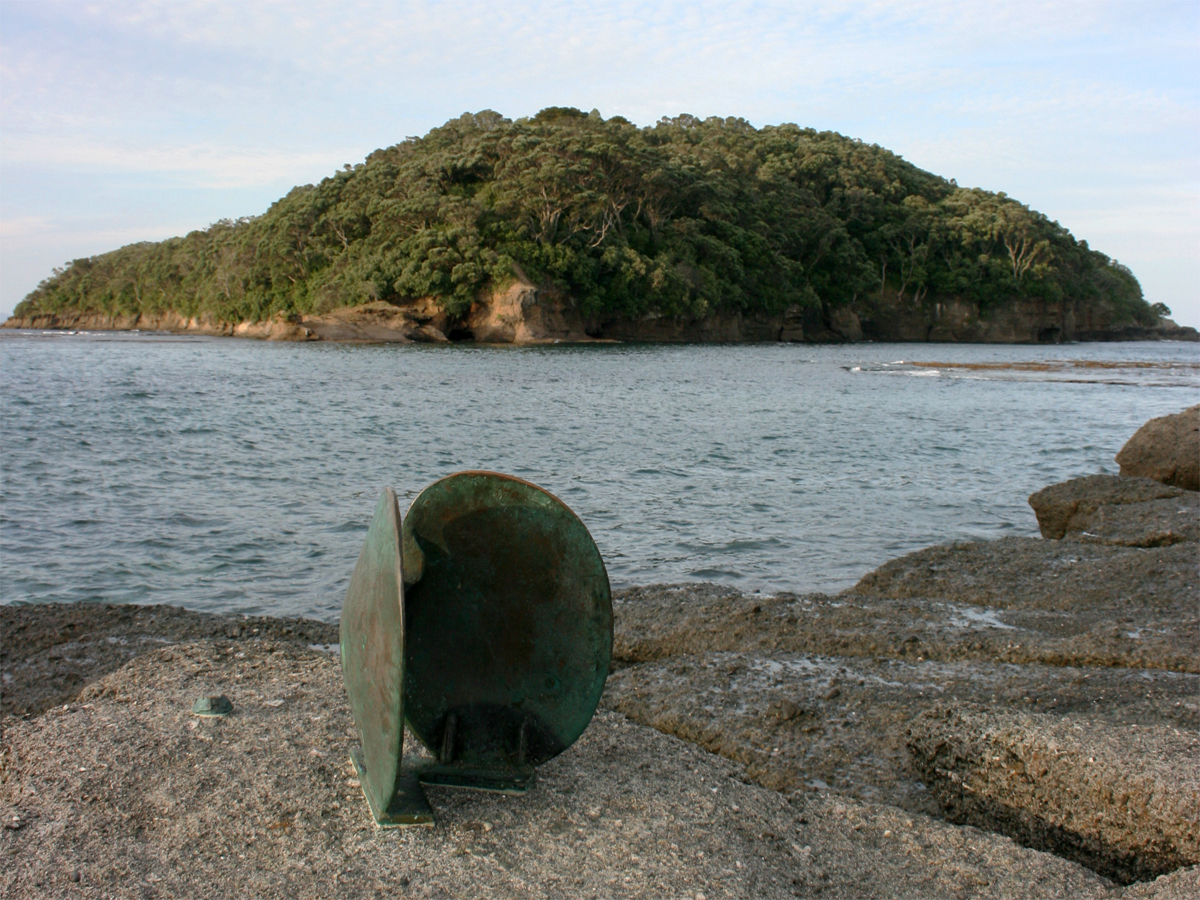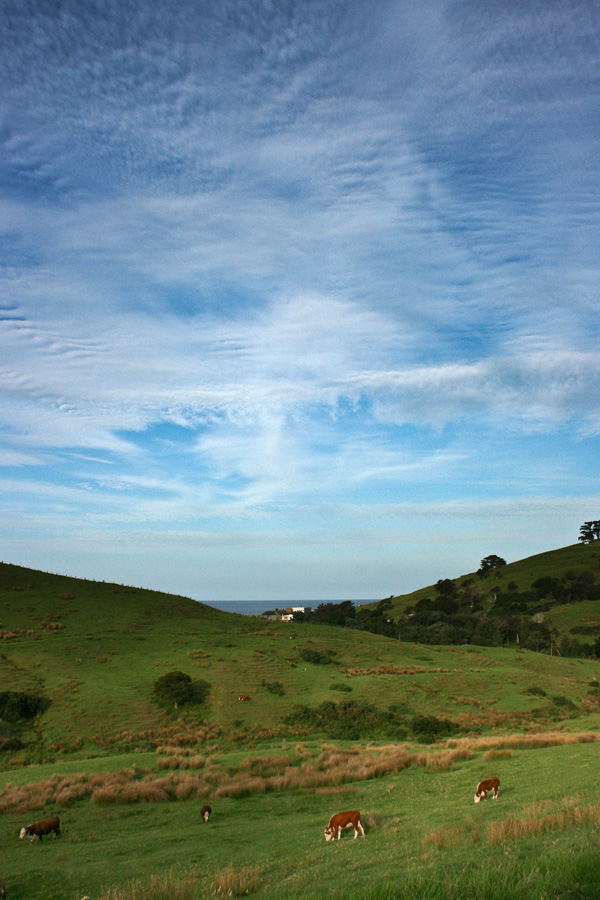|
John Morton (zoologist)
John Edward Morton (18 July 1923 – 6 March 2011) was a biologist, scholar, theologian, and conservationist from New Zealand. Trained at Auckland University College and the University of London, he became the author of numerous books, papers, and newspaper columns. Morton researched New Zealand's ecology and marine life, and was a marine zoologist. He was also the presenter of the imported nature and science television programme, ''Our World''. Early life Born in Morrinsville on 18 July 1923, Morton was the son of Ronald Bampton Morton. He was educated at Morrinsville District High School, and went on to study zoology at Auckland University College, graduating with the degree of MSc with first-class honours in 1948. In 1952 he completed his PhD, followed in 1959 by a DSc, at the University of London. During this time he was also a lecturer in the zoology department at the same university. Career On his return from London in the early 1960s, he became the first person to be ... [...More Info...] [...Related Items...] OR: [Wikipedia] [Google] [Baidu] |
Morrinsville
Morrinsville is a provincial town in the Waikato region of New Zealand's North Island, with an estimated population of as of The town is located at the northern base of the Pakaroa Range, and on the south-western fringe of the Hauraki Plains. Morrinsville is around 33 kilometres east of Hamilton and 22 kilometres west of Te Aroha. The town is bordered by the Piako River to the east and the Waitakaruru Stream to the south. History and Culture Pre-European settlement Prior to European settlement of New Zealand, the hills around present-day Morrinsville were occupied by the Ngati Werewere Māori people of the Ngati Haua Iwi, and the site of the present-day town was on or near to an old Māori route between the upper Waihou-Piako basin and the Ngāruawāhia area. Following European settlement, some early European traders are believed to have traversed this route prior to 1834 when the Rev. J. Morgan travelled up the Piako River to near the future town site and crossed west ... [...More Info...] [...Related Items...] OR: [Wikipedia] [Google] [Baidu] |
New Zealand Geographic
''New Zealand Geographic'' is a bi-monthly magazine founded in 1989 and published by Kōwhai Media of Auckland, New Zealand. In the format popularised by ''National Geographic,'' it focuses on the biodiversity, geography, and culture of New Zealand, Antarctica, and nearby Pacific Islands. The magazine showcases documentary and editorial photography, and each year runs a national Photographer of the Year competition. History ''New Zealand Geographic'' was founded in 1988 by Kennedy Warne and John Woods, and the first issue was Jan-Feb 1989. Warne, who served as editor for 15 years, had a Master's degree in marine biology, which informed the magazine's early focus on conservation and natural history. He was followed in 2004 by Warren Judd as editor. In the July–August 2008 issue the editor announced the formation of a New Zealand Geographic Society, renamed in the next issue to the New Zealand Geographic Trust, with all subscribers counted as members. It announced its first rese ... [...More Info...] [...Related Items...] OR: [Wikipedia] [Google] [Baidu] |
Waitututu
The Waitutu River is a river in southern Fiordland, New Zealand New Zealand ( mi, Aotearoa ) is an island country in the southwestern Pacific Ocean. It consists of two main landmasses—the North Island () and the South Island ()—and over 700 smaller islands. It is the sixth-largest island count .... It is the outlet of Lake Poteriteri to the sea. See also * List of rivers of New Zealand References Rivers of Fiordland {{Fiordland-river-stub ... [...More Info...] [...Related Items...] OR: [Wikipedia] [Google] [Baidu] |
Whirinaki Forest Park
Whirinaki may refer to: * Whirinaki, Northland * Whirinaki, Hawke's Bay * Whirinaki Te Pua-a-Tāne Conservation Park * Whirinaki Power Station The Whirinaki Power Station is an open cycle gas turbine power station at Whirinaki in Hawke's Bay, New Zealand. FT4 plant The NZED constructed a 220 MW gas turbine power station on this site, which began operation in 1978. This power station com ... {{geodis ... [...More Info...] [...Related Items...] OR: [Wikipedia] [Google] [Baidu] |
Pureora Forest Park
Pureora Forest Park is a protected area in the North Island of New Zealand. Within its rich rainforest are an abundance of 1,000-year-old podocarp trees. It is "recognised as one of the finest rain forests in the world". Established in 1978, after a series of protests and tree sittings, the park is one of the largest intact tracts of native forest in the North Island and has high conservation value due to the variety of plant life and animal habitats. New Zealand's largest totara tree is located nearby on private land. History Anti-logging protests were led by conservation activists Stephen King, Shirley Guildford, and others in the late 1970s in what is now Pureora Forest Park. They had a novel way of erecting platforms on treetops, sitting over it to protest logging operations in the forests. The result of their efforts was tri-fold: the park was established in 1978; the Government of New Zealand changed rules to meet the protesters' demand to permanently stop logging operatio ... [...More Info...] [...Related Items...] OR: [Wikipedia] [Google] [Baidu] |
Te Hāwere-a-Maki / Goat Island
Goat Island or Te Hāwere-a-Maki is a tiny island (approximately ) in New Zealand located close to the North Island coast, north of Auckland, northeast of Warkworth, and directly west of Little Barrier Island. It is within Cape Rodney-Okakari Point Marine Reserve, New Zealand's first marine reserve. History The island is spiritually significant to the local Māori tribe, Ngāti Manuhiri, because their ancestral waka (canoe), '' Moekākara'', is said to have landed nearby. The Cape Rodney-Okakari Point Marine Reserve was established in 1975, making Goat Island and the surrounding waters a protected area. As well as being in a marine reserve, Goat Island is a scenic reserve. The University of Auckland has a research facility at Goat Island known as the Leigh Marine Laboratory headed by Professor John Montgomery. This will form the base for the University's new South Pacific Centre for Marine Science (SPCMS). Prime Minister Helen Clark launched the national and international ca ... [...More Info...] [...Related Items...] OR: [Wikipedia] [Google] [Baidu] |
Leigh, New Zealand
Leigh is a small coastal community in the north of the Auckland Region of New Zealand. It lies on the west side of Omaha Cove, a small inlet within Omaha Bay to the south of Cape Rodney. It is 13 km from Matakana, 21 km from Warkworth and approximately 92 km north of Auckland City. Leigh is the nearest town to Cape Rodney-Okakari Point Marine Reserve surrounding Te Hāwere-a-Maki / Goat Island. The reserve, the first of its type in New Zealand, is also the location for the University of Auckland's Marine Laboratory.Wises New Zealand Guide, 7th Edition, 1979. p.200. Demographics Statistics New Zealand describes Leigh as a rural settlement, which covers . Leigh is part of the larger Cape Rodney statistical area. Leigh had a population of 606 at the 2018 New Zealand census, an increase of 36 people (6.3%) since the 2013 census, and an increase of 105 people (21.0%) since the 2006 census. There were 261 households, comprising 306 males and 300 females, giving a se ... [...More Info...] [...Related Items...] OR: [Wikipedia] [Google] [Baidu] |
Cape Rodney-Okakari Point Marine Reserve
Cape Rodney-Okakari Point Marine Reserve is a protected area in the North Island of New Zealand. The reserve covers an area of , extending from Cape Rodney to Okakari Point, extending 800m offshore. Te Hāwere-a-Maki / Goat Island lies within the reserve and Leigh is the closest town. It was created in 1975 as the first marine reserve in New Zealand. Auckland University operates Leigh Marine Laboratory at the reserve. Laboratory scientists have scientific equipment around the reserve to study how marine ecosystems function. Geography The marine reserve has a variety of shores, including the rocky headland of Cape Rodney, the white sandy surf beach at Pakiri, and the sheltered mudflats and mangrove forests of Whangateau Harbour. There are also boulders, course sand, mudstone terraces, pebblestone rock and greywacke, providing a range of habitats for marine life. History Te Hāwere-a-Maki, also known as Goat Island or Motu Hāwere, is important to Ngāti Manuhiri, who trace t ... [...More Info...] [...Related Items...] OR: [Wikipedia] [Google] [Baidu] |
Marine Reserve
A marine reserve is a type of marine protected area (MPA). An MPA is a section of the ocean where a government has placed limits on human activity. A marine reserve is a marine protected area in which removing or destroying natural or cultural resources is prohibited, marine reserves may also be "no-take MPAs,” which strictly forbid all extractive activities, such as fishing and kelp harvesting.. As of 2007 less than 1% of the world's oceans had been set aside in marine reserves. Benefits include increases in the diversity, density, biomass, body size and reproductive potential of fishery and other species within their boundaries. As of 2010, scientists had studied more than 150 marine reserves in at least 61 countries and monitored biological changes inside the reserves. The number of species in each study ranged from 1 to 250 and the reserves ranged in size from 0.006 to 800 square kilometers (0.002 to 310 square miles). In 2014, the World Parks Association adopted a target ... [...More Info...] [...Related Items...] OR: [Wikipedia] [Google] [Baidu] |
Teleological
Teleology (from and )Partridge, Eric. 1977''Origins: A Short Etymological Dictionary of Modern English'' London: Routledge, p. 4187. or finalityDubray, Charles. 2020 912Teleology" In ''The Catholic Encyclopedia'' 14. New York: Robert Appleton Company. Retrieved 3 May 2020. – via ''New Advent'', transcribed by D. J. Potter is a reason or an explanation for something which serves as a function of its end, its purpose, or its goal, as opposed to something which serves as a function of its cause. A purpose that is imposed by human use, such as the purpose of a fork to hold food, is called ''extrinsic''. ''Natural teleology,'' common in classical philosophy, though controversial today, contends that natural entities also have ''intrinsic'' purposes, regardless of human use or opinion. For instance, Aristotle claimed that an acorn's intrinsic ''telos'' is to become a fully grown oak tree. Though ancient atomists rejected the notion of natural teleology, teleological accounts of non ... [...More Info...] [...Related Items...] OR: [Wikipedia] [Google] [Baidu] |
Teilhard De Chardin
Pierre Teilhard de Chardin ( (); 1 May 1881 – 10 April 1955) was a French Jesuit priest, scientist, paleontologist Paleontology (), also spelled palaeontology or palæontology, is the scientific study of life that existed prior to, and sometimes including, the start of the Holocene epoch (roughly 11,700 years before present). It includes the study of fossi ..., Theology, theologian, philosopher and teacher. He was Charles Darwin, Darwinian in outlook and the author of several influential theological and philosophical books. He took part in the discovery of Peking Man. He conceived the vitalism, vitalist idea of the Omega Point. With Vladimir Vernadsky he developed the concept of the noosphere. In 1962, the Congregation for the Doctrine of the Faith condemned several of Teilhard's works based on their alleged ambiguities and doctrinal errors. Some eminent Catholic figures, including Pope Benedict XVI and Pope Francis, have made positive comments on some of his ideas sin ... [...More Info...] [...Related Items...] OR: [Wikipedia] [Google] [Baidu] |
Palaeontologist
Paleontology (), also spelled palaeontology or palæontology, is the scientific study of life that existed prior to, and sometimes including, the start of the Holocene epoch (roughly 11,700 years before present). It includes the study of fossils to classify organisms and study their interactions with each other and their environments (their paleoecology). Paleontological observations have been documented as far back as the 5th century BC. The science became established in the 18th century as a result of Georges Cuvier's work on comparative anatomy, and developed rapidly in the 19th century. The term itself originates from Greek (, "old, ancient"), (, (gen. ), "being, creature"), and (, "speech, thought, study"). Paleontology lies on the border between biology and geology, but differs from archaeology in that it excludes the study of anatomically modern humans. It now uses techniques drawn from a wide range of sciences, including biochemistry, mathematics, and engineering. Us ... [...More Info...] [...Related Items...] OR: [Wikipedia] [Google] [Baidu] |






_Wellcome_M0001113.jpg)
